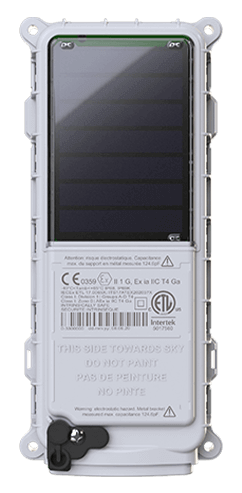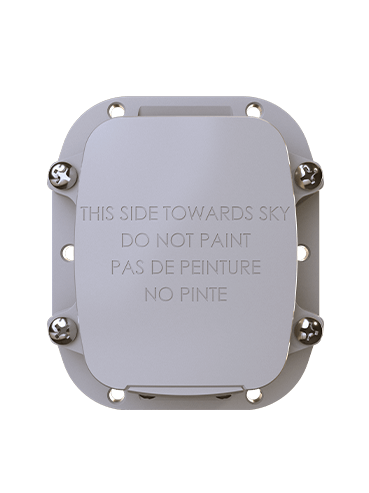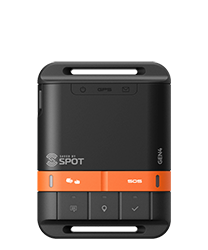Satellites and IoT combine in best-of-breed tracking solution for livestock owners
In the years since the Internet of Things became common parlance, one of the sectors which has seen the most dramatic levels of IoT solution expansion, and which has perhaps derived the most direct benefit to people, is agriculture and farming, even leading to the creation of a category of technology called ‘agtech’.
The need for cattle trackers and other livestock GPS solutions s a major part of this. A big milestone for Globalstar happened earlier this year with the commercial debut of Ceres Tag. Launched by Ceres, an Australia-based company, Ceres Tag is a livestock tracking systemthat uses Globalstar satellite communications at its core.
Ceres Tag is the result of five years of development testing, with the involvement of several Australian government agencies, always with animal welfare the abiding priority. The company built its bespoke livestock tracking system, now being marketed internationally, based on Globalstar’s ST100 chip. A critical factor was that the ear tag needed to be very small and lightweight so as not to harm the animal. The Tag is solar-powered with a battery replacement life of 10 years, providing livestock managers with an ultra low-maintenance, resource-efficient system.
The automation of information relating to knowing where livestock animals are, their welfare and condition any time of the day, anywhere and understanding their behaviour's can fundamentally improve the way farmers manage animals and land for a more sustainable and productive future.
Traceability, biosecurity, performance, health and welfare have never before been in the spotlight as they are now. Ceres Tag can generate automated daily records of animals, and inform on pasture feed intake - primary to determining feed efficiency - as well as genetic selection and managing of greenhouse gas. Ceres Tag has been named #1 Big Breakthrough Technology for AgChange in the Next Decade by the AgJournal magazine.
The value of being able to monitor herd animals through a livestock GPS tracker, to understand their movements and to ensure their well-being, is now so enhanced that longer-established solutions providers are developing next-generation solutions to offer even more sophistication and features.
Next-generation horse tracking is now enriched with breeding data
For instance, in response to market demand, Mongolia-based Globalstar VAR, Spotter, created a livestock tracking system built around Globalstar’s SmartOne C IoT transmitter which it brought to market in 2019.
Horses are central to the daily life of Mongolians, and horse racing is a major sport. But since the sparsely populated nation’s 4.5 million semi-wild horses roam fence-free, keeping tabs on the valuable equines is a major challenge.
While the region’s horses typically don’t travel more than 50km from home, they sometimes wander hundreds of kilometres to find good grass, or they can get lost in high winds and storms. Some go missing for months, and others never make it back to their owners, increasing the risk of theft.
Livestock GPS tracker devices relying on GSM had already proven inadequate. So Spotter’s satellite-enabled solution was an instant hit. Its SmartOne C-based collar, with long-lasting battery, is ideal for tracking far-roaming herds.
The first collar which Spotter had earlier developed was based on Globalstar’s SPOT Trace tracker, chosen for its economical price, but also its small size which made it easy to integrate into a collar. SPOT Trace’s ease-of-use, configurability - allowing the owner to choose the frequency of tracking - and fixed price for transmissions were also deciding factors.
Enkh-Amgalan Ganbaatar, Spotter co-founder and CEO, explains that both types of collars are useful for different customers: “Requirements differ for tracking racehorses compared with ordinary horses, and depending on the location. Racehorse owners are eager to keep particularly close tabs on their valuable animals, so they appreciate the hourly tracking SPOT Trace enables. Meanwhile owners of family herds and those who use horses for transportation, meat and milk value the extended tracking duration and lower maintenance made possible through SmartOne C’s extended battery life.”
5,000 Spotter collars are currently deployed in the field in Mongolia with deployments expanding widely into Kazakhstan, Kyrgyzstan and Tajikistan.
Spotter’s livestock tracking system continues to be in high demand; this has spurred Spotter on to develop further. Spotter recently released new Android and iOS apps with a choice of three different mapping solutions. One of these offers offline mapping, so that that when the farmer heads out to tend to horses in extremely remote steppe, where there’s no mobile signal, the Spotter solution can still help find the animals.
By the end of 2021, Spotter customers will also be able to benefit from integration of a rich dataset of individual horse registration information. The lineage and other breeding data, with photos, for any particular horse, will be viewable with just a single click on the interface. This capability will give owners unprecedented depth of knowledge of their free-roaming stock. “We are creating a complete horse-centric platform to give farmers highly granular understanding of their herds, enabling them to take informed future-looking livestock management decisions,” says Spotter’s Ganbaatar. Additionally, customers can Spotter's horse registration platform to register their horses with microchips and link to the livestock theft prevention division of local police.
Tech devised by pioneering Norwegian sheep farmer now helping safeguard 50,000+ livestock
Norway-based FindMy has been a true trailblazer in this field and epitomises satellite IoT animal tracking innovation. FindMy was set up by Halvor Mjoen, his sister Marit Mjøen Solem, and her husband Arnstein Solem. The Mjoens have been sheep farmers for generations, and they know all too well how vital it is to safeguard the family’s livestock. In the 2009 mountain grazing season, predators claimed over a fifth of their herd.
Determined to find a livestock GPS tracking solution to protect the family's livestock in a region where there’s no mobile coverage, Mjoen created a satellite-based collar that acts as a virtual shepherd, alerting the farmer to potential problems. The result was FindMySheep AS, and the start of a close partnership with Globalstar.
The Norwegian government also wanted to co-fund a livestock tracking initiative to understand why hundreds of sheep were disappearing each year. This funding which FindMySheep secured enabled it to launch as an entire solution with back-office functionality that enables farmers to visualise the location of their animals at any time. Since rebranding as FindMy, and having become a Globalstar partner, the solution’s geo-fencing capability alerts the farmer when an animal or flock is wandering too far so that the animals can be herded to safety.
FindMy built the collars around Globalstar’s STX3 chipset for its small size, ruggedness, long battery life, easy integration, as well as its competitive price, enabling Mjoen to set farmer-friendly price points.
In 2019, as it celebrated its 10th anniversary, and the milestone of 50,000 deployed collars, FindMy introduced its next-generation platform to the international market. The new design is smaller and more lightweight, has Bluetooth, and requires much lower maintenance thanks to new extra long-life replaceable batteries. The latest collars feature a custom-designed antenna which ensures high messaging success rates. Explains Mjoen, “We’ve also now industrialised our solution, and the new collar is both more energy-efficient and robust; it can really take a beating.”
FindMy’s software delivers new livestock GPS tracker functionality, including delivering a complete herd/flock location update at particular convenient times of day as specified by the farmer. If the track points suggest something’s wrong, the farmer knows exactly where to head. The system also now includes an improved accelerometer and motion detector sensitive enough to detect if an animal is in distress, such as if it’s frightened or being chased.
FindMy collars communicate with Globalstar satellites to geo-fence livestock, helping to ensure animals graze only in designated areas, and to locate those which have escaped or are injured.
FindMy’s data trail empowers farmers to analyse areas of best-quality grass and they can proactively manage grazing for future seasons. Farmers deploying FindMy report a significant reduction in animal loss, with consequent direct positive impact on their business. FindMy additionally helps protect free-roaming reindeer for owners across the Nordic region, reaching inside the Arctic Circle.
In its 12-year partnership with Globalstar, FindMy has successfully transmitted over 20 million satellite-enabled IoT tracking messages. Says Mjoen: “We owe our success to listening carefully to our customers, understanding their everyday operations, and working to deliver what they really need.”
Satellite IoT helping Africa’s farmers and wildlife conservationists
Africa’s farming sector, where livestock often roam fence-free, has seen huge growth in recent times. Livestock theft is a serious day-to-day problem, predators pose extra risk. Farmers are embracing satellite technology as they see the value of reliable livestock tracking systems and geo-fencing.
Streamline South Africa has developed its IoT-enabled Guardian Animal Tracking Collar based on Globalstar’s ST100 IoT chip and is growing in popularity in Africa. In one deployment, Streamline’s collar is tracking 7,500 cattle on 67,000 hectares in South Africa. This is the home of the world’s biggest herd of Pinzgauer cattle, an Austrian breed praised for its fertility, disease-resistance and high beef quality. In the past, in any year as much as 30% of the herd could be written off with causes ranging from lost stock, theft and fatality from cliff falls.
Due to the vast expanse, challenging topography and limited GSM coverage, it takes a large amount of resource in the form of personnel, air and land vehicles and fuel to conduct searches for missing animals.
As cattle move in herd groups following leaders, it’s usually sufficient to have a cattle tracker for only the leader cows. Each Streamline Guardian collar is powered by a solar panel with 500mAh battery. The Globalstar ST100 board is enclosed in polyetherimide casing and 40-50mm industrial web belt with embedded steal cable is used for the collar material. The collar is fastened with secure lock bolts with counter weights to keep the cattle tracker positioned with best line of sight.
Additionally, in this huge deployment, 34 ground patrol staff are employed as part of the livestock management programme. However, with limited GSM, it was a challenge to keep in contact with them. The team now carry Globalstar SPOT Gen3 satellite devices, which give managers the ability to track the staff’s locations and provide a means of communication while outside of cellular coverage.
Data from the cattle’s collars and the SPOT devices are pushed to the Spot My Globalstar platform which allows for an overview of farm activity. For the ground patrol, geofences are set in specific farm management areas for enter, exit or both. The customer is sent messages indicating time of entry and exit at specific geofence locations throughout the day.
Geofences are set around the cattle containment area as well as near high-risk cliffy areas. When animals reach the geofence perimeter or the high-risk area, the farmer receives a cattle tracker alert. The nearest ground patrol team is identified and dispatched to respond.
In yet another African farming deployment, SPOT Trace is being used to simultaneously track farm cattle and local lions. In Botswana, wildlife reserves have no fences and people live among the animals. In these areas, keeping farm cattle safe from predation is of the highest priority. With the help of a German research institution, villagers are using SPOT Trace as an early warning livestock tracker system to alert farmers and the local community when lions get too close to cattle, or to the village.
Satellite and IoT technologies are also helping preserve ancient reindeer herds, husbandly practices and cultures in Europe’s far north, and they are supporting farmers in the southernmost reaches in Africa safeguard their cattle against lions. As technologists, there can hardly be a context more meaningful to support than in the relationship between humans and the animals around us on which we so rely.
 SmartOne Solar
SmartOne Solar SmartOne C
SmartOne C STX3
STX3 STX3 Dev Kit
STX3 Dev Kit SPOT X
SPOT X SPOT Gen4
SPOT Gen4 SPOT Trace
SPOT Trace